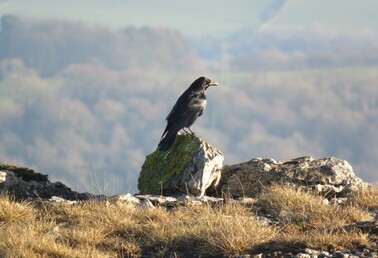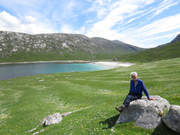
When The Galloway Hoard is discovered after it has lain undisturbed for a millennium the Queen’s Lord Treasurer’s Remembrancer has to decide who owns ownerless property. The National Museum of Scotland is given six months to raise nearly £2 million to save it for the nation. That sum goes to the finder. Six frantic months of fund raising to save The Galloway Hoard for Scotland. Urgency brought forth a series of lectures and sequential research videos, The Unwrapping of the Galloway Hoard. The first glimpse shows an earthy decoy layer of Hiberno-Scandinavian broadband arm-rings, Anglo-Saxon silver in the form of ingots, used as currency, an Anglo-Saxon name Egbert stamped as if to identify his property when different bundles could be reclaimed. And there are Anglo-Saxon runes. There’s a silver pectoral cross wrapped in a chain worn around the neck of the owner, probably a bishop. Animal symbols of the four Evangelists appear in late Anglo-Saxon style, decorated with black niello and gold leaf. Why was this precious pectoral cross presented in the decoy layer and not more carefully hidden?
Beneath a layer of gravel was a second, richer layer of material. There’s a silver-gilt treasure pot and lid, filled to the brim with artefacts each carefully wrapped in textiles that have fused and caused corrosion in contact with metals. Textiles allow carbon dating as gold and silver do not. There are five unique Anglo-Saxon disc brooches unlike anything previously found in Scotland. Quatrefoil brooches, one with a figure blowing a horn. Objects were wrapped in leather, wool, linen and silk- silk that can only have come from China and the Silk Road. There are artefacts in rock crystal that may be from Roman times. Colourful glass beads worn over time suggest they were precious to their owners perhaps through several generations. Individually wrapped and carefully placed within the silver-gilt lidded pot are earth balls the size of marbles. Analysis reveals they contain tiny fragments of gold and bone, holy relics from Christian sites perhaps.
Paradox surrounds the fate of The Galloway Hoard. All that is precious in the hoard is accumulated over some time. Danger threatens and the hoard is hidden in urgency and secrecy. Time stand still for a thousand years but below ground there’s an earth-change into something rich and strange. In 2014 a detectorist unearths the hoard, hides it overnight to ensure no one else finds it. Ownership is challenged. In the frantic months of fund-raising time races away and now the hoard is shown across the world, publicising it in all its wonder. We learn, and unlearn. The story will change again in the light of the latest research. Knowledge is elusive and evolves, is challenged, and archaeologists must conserve these objects for a time when science will reshape the story . The next hoard to be discovered may give more context to The Galloway Hoard.

 RSS Feed
RSS Feed